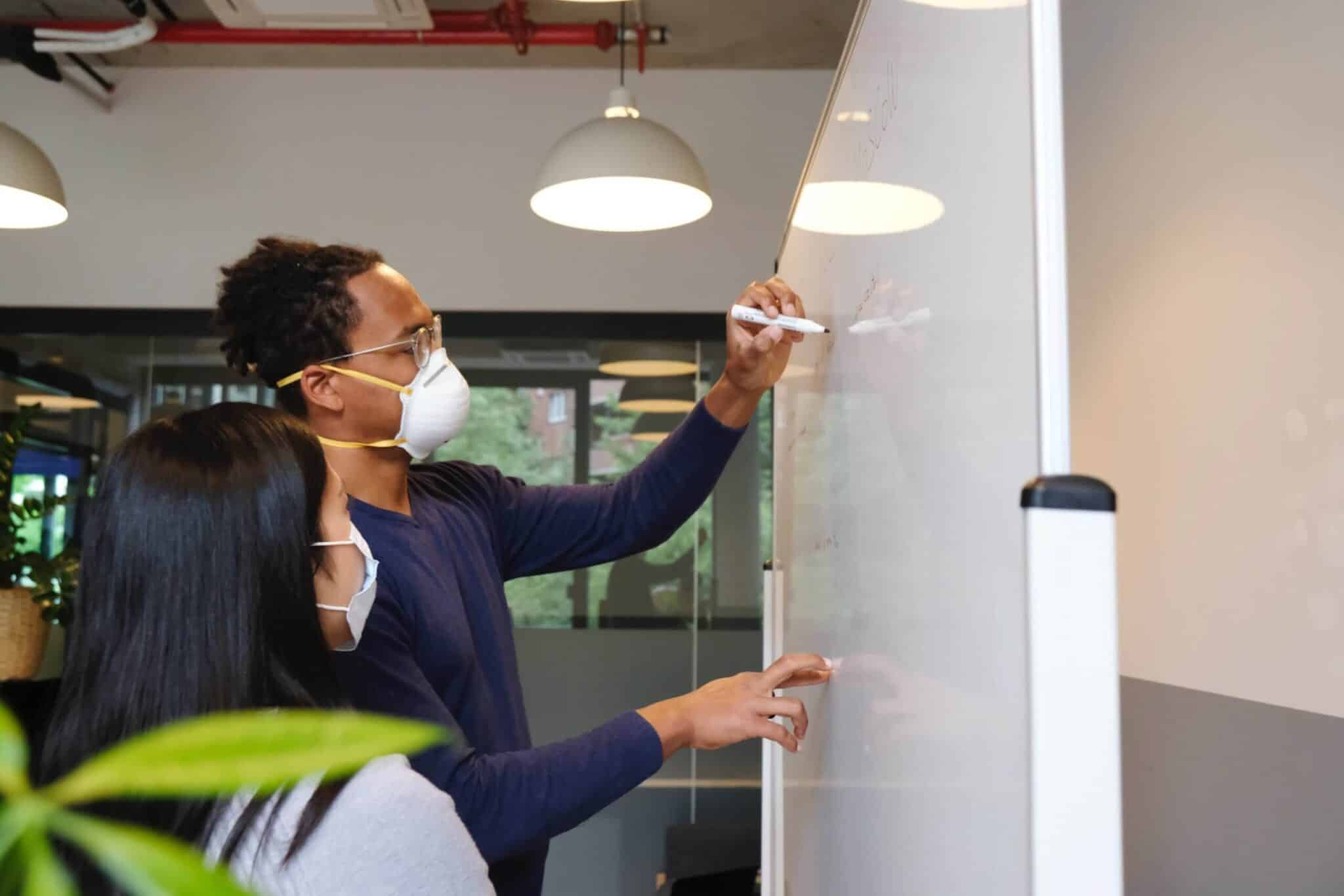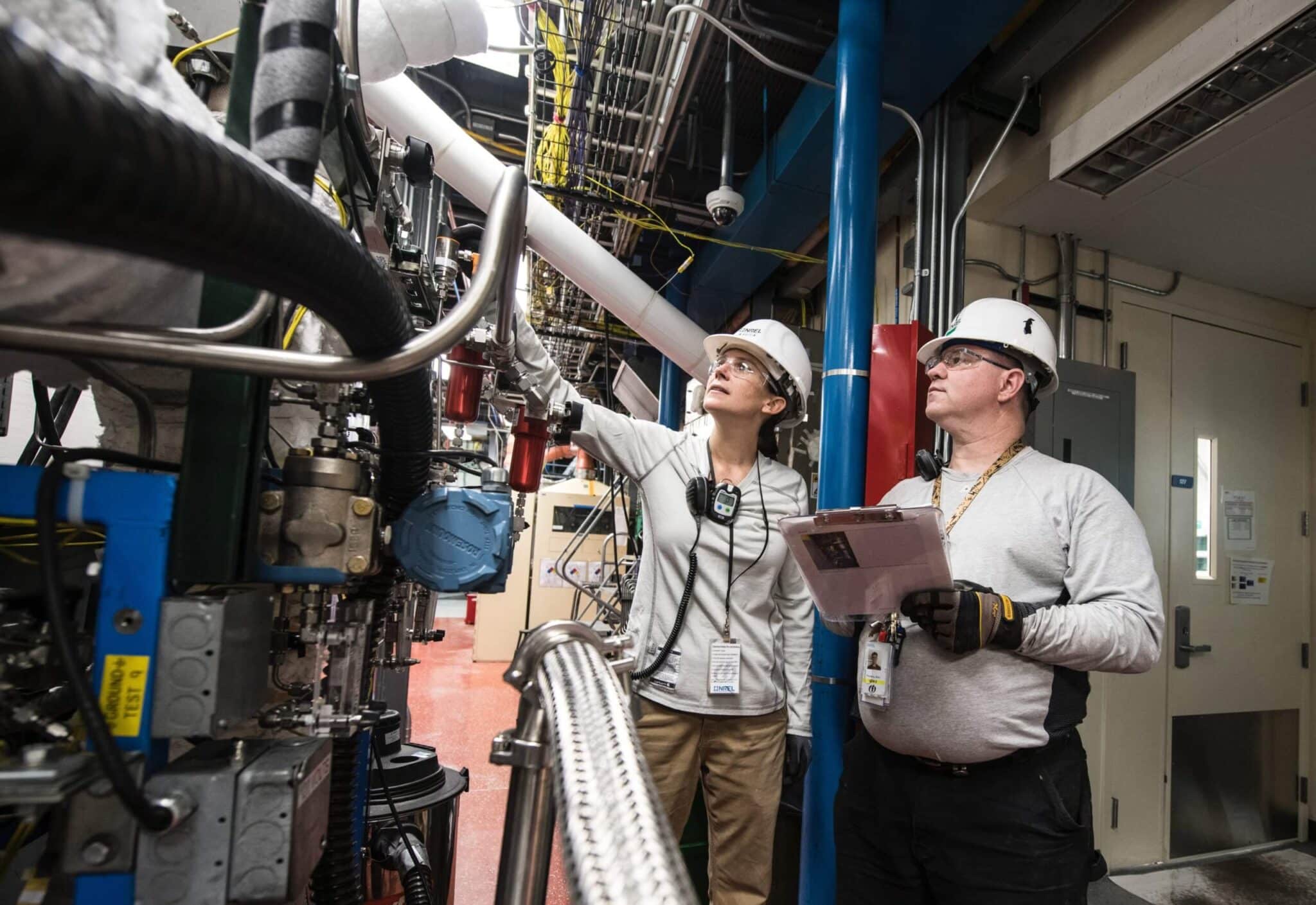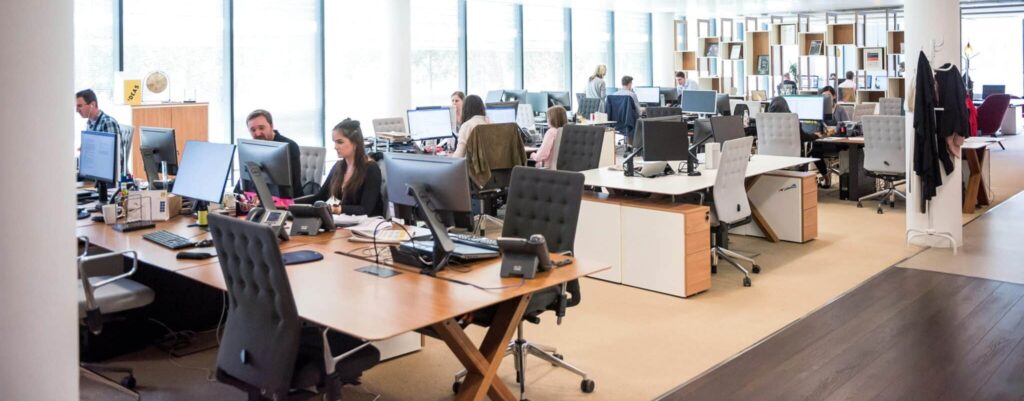The future of work: four factors to ensure a resilient workplace

Does your company have a plan to ensure your office is resilient in the post-COVID workplace?
Facilities managers (FMs) and HR teams across the world now face the reality of shaping and implementing the future of work. But while COVID-19 has accelerated the remote work revolution, and brought about beneficial change for many employees, it’s also raised numerous challenges about the long-term sustainability of working from home.
Here, we identify four key areas that will play a crucial role in delivering resilient workplaces that are fit for the future.
Employee experience
Data collated by USC Dornsife reveal disengaged employees cost American businesses a staggering $450 to $550 billion every year. The figures illustrate a stark financial truth—firms that ignore employee well-being and happiness do so at their peril.
The data went on to explore key employee pinch points with lack of flexibility cited as one of the reasons for discontent. More than one quarter (29%) of employees end up resigning because of a poor work-life balance while 35% believed they’d be happier if employers’ offered greater flexibility. Despite this, figures published by the Bureau of Labor Statistics found that just 7% of civilian workers as of March 2019 enjoyed the benefit of working from home or from some other pre-approved location.
With this in mind, COVID-19 has simply fast-tracked the desires of millions of employees and forced the issue of flexibility and remote working. Highlighting this seismic shift is the Global Work from Home Experience Survey conducted by GlobalWorkplaceAnalytics.com. The survey, which gathered data from nearly 3,000 respondents found that 88% of them had worked from home on a regular basis during the pandemic compared to just 31% previously.
But as restrictions start easing and more employees are asked to return to offices, it’s not just ongoing flexibility that employers will need to consider, it’s workplace hygiene and safety too. Anecdotal evidence and results from a number of surveys conducted across the country share one common, valid theme—that employees are fearful of becoming ill while COVID-19 is still rife.
One way in which FMs can help ease the transition back to work is by implementing clear health and hygiene protocols and strategies as well as communicating with employees clearly and effectively. Risks and employee anxiety can be minimized further still with the help of software such as Visual Directory®. Not only is this a powerful tool for facilities managers, it’s a fully interactive platform that empowers employees—enabling them to book meeting rooms and hot desks while also being able to locate the nearest hand sanitizing stations.

Built space versus the digital space
The Global Work from Home Experience Survey shows that working from home has been a profoundly positive experience for many workers (and employers) as figures reveal:
- 72% of employees found they were better at managing distractions and interruptions
- 80% found they could focus for longer periods of time and think in more innovative ways
- 68% of workers found they were “very successful” at working from home
Crucially, the majority of managers (70%) found that teams were just as or more productive while working from home. Yet despite the benefits of remote working, there are fundamental ways in which the experience can be made even better.
Indeed, results from the survey imply that maintaining long-term enthusiasm and productivity means ensuring employees have the right tools and training for the job. For instance, while most workers were satisfied with tools to help them work remotely, around 20-25% of workers felt they lacked expertise or proficiency in some. Another aspect of remote working that employees felt could be improved on, is collaboration and the ability to get an immediate response from colleagues.
The data highlights both the pros and cons of remote working and shows that there’s no clear winner when it comes to the built office environment vs the digital workspace. In fact, almost all indicators point towards a hybrid approach being the most sustainable option.
The survey goes on to support this with 76% of workers saying they want to work at least one day from home while most people would prefer an average of two days in the office. More than 70% of business leaders have even gone so far as to say they will be reducing their physical office space.
Businesses also need to be mindful of the 16% of workers that would prefer not to return to the office at all. For them, there needs to be a structure in place that ensures remote contributions are viewed as equally important as those from people who are “present in person”. On the one hand, this means improving training in software solutions to give all employees confidence and greater proficiency. But it also means promoting a culture where remote working is not demeaned.

Technology as a tool
Unquestionably, the future of work is working from home at least part of the time. Enabling this ultimately comes down to the right type of technology — crucial for creating a resilient workplace while encouraging a collaborative culture.
For firms in the early stages of exploring remote access tools, software can help facilities managers organize office space at a granular level and ensure it is utilized effectively and safely. In addition, the ability to check how space is being used on a day-to-day basis can help inform longer-term decisions about how teams work and plot space configuration accordingly. Facilities managers will also be able to identify risky bottlenecks that have the potential to increase the risk of contamination and exacerbate employee anxiety.
Firms that support remote working with tools like OfficeSpace already enjoy features that allow employees to pre-book desks and view meeting room availability in real time. For FMs pre-empting the reopening of their physical workspaces, the platform also utilizes artificial intelligence (AI) technology to create socially distanced seating plans or team bubbles quickly and easily. With the nature of work changing, smart tech and automated processes will play a pivotal role in ensuring successful transformation.

The role of facilities managers
The responsibility for orchestrating and implementing the hybrid office space will ultimately lie with facilities managers. This critical role will mean not only drawing on their own expertise but liaising with HR, business leaders and employees themselves in order to tailor truly bespoke solutions that work at a corporate and individual level.
For many facilities managers it may well mean calling for greater autonomy or tools to expedite the necessary changes needed in a post-Covid workplace. For some it could be yet another reason to embrace the merger of FM, HR and IT teams. What is certain, is that facilities managers will play an ever increasingly important part in ensuring business and employee safety adheres to corporate standards while being mindful of the impact on public health.
The scope for facilities managers is vast. But from managing communal spaces, to assessing safety in relation to HVAC systems, there are numerous valuable lessons that can be learnt from businesses that have already reopened their physical offices.
Looking ahead
The reality facing many firms and individual employees, is that work is not going to be what it used to be and nor should it. Figures have consistently shown that employees have been crying out for a different way of working—more autonomy, more flexibility, more work-life balance. All of which are unforeseen yet positive side effects of the Covid-19 pandemic.
Evidence also clearly shows that there is no one ‘better’ way of working and that a happy medium is the strategic sweet spot. But successfully embracing the advantages of both in-office and remote working means planning both aspects with clear and defined protocols for each.
If you’re looking for ways to integrate innovative software solutions to help you manage your office space reopening, contact us today. Our experts can demonstrate the ways in which your business can encourage and nurture a resilient, productive and efficient working environment not just right now, but for the future too.
Photos: airfocus, Andrea Piacquadio, Razvan Chisu, OSS



